There are many attractions in Germany. But Neuschwanstein Castle especially attracts tourists: everyone dreams of coming here and seeing the inimitable beauty of the miracle of medieval architecture.
Neuschwanstein literally translates from German into Russian as "New Swan Rock". The fabulous beauty of the area where the beautiful building is located, matches its magical appearance. The castle stands majestically on a hill a little over 1 km high, the Bavarian Alps with the highest mountain in Germany, the Zugspitze (2964 m), became a worthy background. Neuschwanstein adorns the terrain of the Bavarian Alps (Bavaria is the largest federal state in the south of Germany). And, standing on the mound, you can endlessly admire the most beautiful landscapes. The city of Füssen and the Hohenschwangau valley are visible from the windows of the pale. Lakes Alpsee and Schwansee (Alpine and Swan) are the appropriate surroundings of an unimaginably beautiful building, beautiful at any time of the year. And tourists, who come here annually up to 1.3 million, can verify this. Moreover, the climate in the south of Bavaria is temperate continental. The weather is due to the location of this part of the land at an altitude of 800 - 1200 m above the sea line. The summer temperature here reaches +26 °С, in winter the thermometer stubbornly does not want to show below -2 °С.
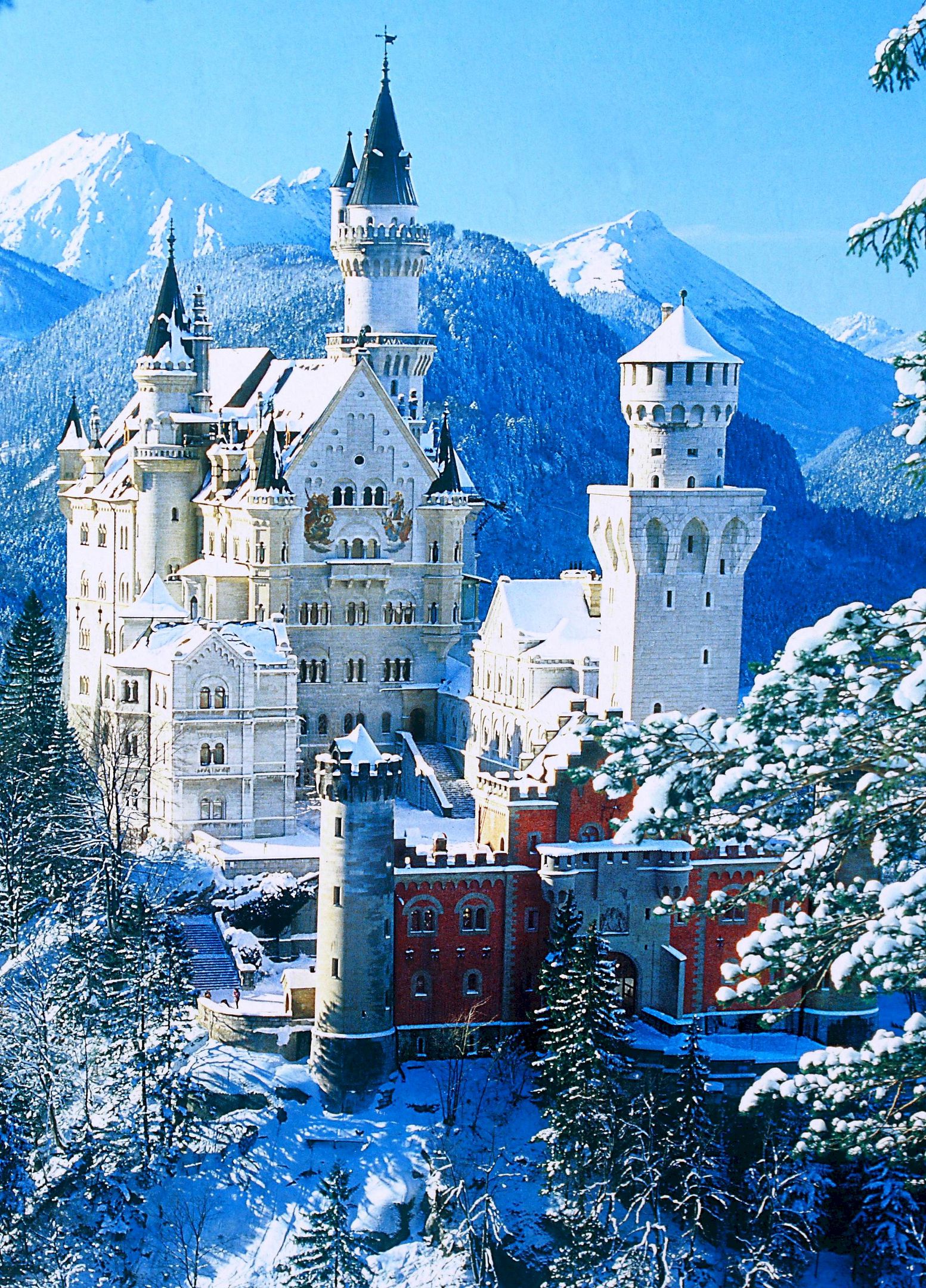 The truly fabulous Neuschwanstein Castle appeared here on the initiative of the Bavarian monarch Ludwig II. He dreamed of erecting a large-scale structure in accordance with his romantic concepts and fantastic views. And, without knowing it, he left a monument to the descendants of the divine charm: Neuschwanstein Castle was included in the list of the 10 most magnificent such structures. Moreover, its exterior and interior are equally impressive with luxury and elegance.
The truly fabulous Neuschwanstein Castle appeared here on the initiative of the Bavarian monarch Ludwig II. He dreamed of erecting a large-scale structure in accordance with his romantic concepts and fantastic views. And, without knowing it, he left a monument to the descendants of the divine charm: Neuschwanstein Castle was included in the list of the 10 most magnificent such structures. Moreover, its exterior and interior are equally impressive with luxury and elegance.
The halls of the fortress are the design embodiment of the operatic works of the German composer Richard Wagner and the heroic deeds of the brave men of German mythology. Architectural and artistic styles are wonderfully intertwined with Moorish, Gothic and Baroque details. Visitors are greeted by columns in the form of stalactites, the Throne Nave with Byzantine features, the Singing Hall with elegantly designed lighting (performances based on the composer's operas were staged in this room). At the same time, a plumbing with hot and cold water was laid in the building, and the building was heated in the same way as the current houses. It turns out that the crowned Bavaria became an innovative ruler who was ahead of his era.
Life principles of Ludwig II
Once uttered the words: "I want to always remain a secret, both for myself and for others" became symbolic for the future anointed of Bavaria (reigned 1864-1886). The phrase once said to the governess turned out to be a wish come true for the Crown Prince. Misunderstood during his lifetime, he died under mysterious circumstances. Passions around his quirks did not subside even after his death. Tourists who have visited the royal castle of Neuschwanstein are now ready to accept the version that is closer in perception. Someone sees the tragedy of a lonely romantic, someone prefers to dwell on the hallucinations of a madman, and someone sees the behavior of a monarch as a trivial eccentricity of a plutocrat.
 Even as a child, the future sovereign of Bavaria looked like a child immersed in himself, in his dreams and fantasies. His childhood years were spent in the family castle of Hohenschwangau, restored in the Gothic style by father Maximilian II of Bavaria, where another palace, Schwanstein, destroyed by that time, had previously stood. The names of all buildings contain the word "schwan", which means "swan". The graceful bird was the heraldic feathered bird of the old county family of Schwangau: the ruler Maximilian II considered himself one of his successors and placed frescoes with scenes from medieval legends and Minnesinger novels on the new fortress. So Maximilian II brought together poetic antiquity with a real local custom. It was in Hohenschwangau that Ludwig II joined the world of beliefs, the main one in which is the knight of the Swan Lohengrin. Later, the autocrat of Bavaria likened himself to this hero: he faithfully honored German mythology, being impressionable and romantic.
Even as a child, the future sovereign of Bavaria looked like a child immersed in himself, in his dreams and fantasies. His childhood years were spent in the family castle of Hohenschwangau, restored in the Gothic style by father Maximilian II of Bavaria, where another palace, Schwanstein, destroyed by that time, had previously stood. The names of all buildings contain the word "schwan", which means "swan". The graceful bird was the heraldic feathered bird of the old county family of Schwangau: the ruler Maximilian II considered himself one of his successors and placed frescoes with scenes from medieval legends and Minnesinger novels on the new fortress. So Maximilian II brought together poetic antiquity with a real local custom. It was in Hohenschwangau that Ludwig II joined the world of beliefs, the main one in which is the knight of the Swan Lohengrin. Later, the autocrat of Bavaria likened himself to this hero: he faithfully honored German mythology, being impressionable and romantic.
 Ludwig enthusiastically accepted the premiere operatic debut of R. Wagner in 1858. While still a boy, the prince was in awe of the composer, whose work he perceived like fairy tales. Becoming a sovereign at the age of 18, he called R. Wagner to Munich. The musician was in a state of the most difficult financial situation. The young monarch made payments on all the debt obligations of the writer, allowed him to be included in his environment, and also entrusted the composer with the largest opera theater. The tsar was captivated by the themes of Wagner's works, in writing which the musician relied on chivalric romances and German myths. Wagner enthusiastically embodied everything that happens in the world of myths and legends on the stage.
Ludwig enthusiastically accepted the premiere operatic debut of R. Wagner in 1858. While still a boy, the prince was in awe of the composer, whose work he perceived like fairy tales. Becoming a sovereign at the age of 18, he called R. Wagner to Munich. The musician was in a state of the most difficult financial situation. The young monarch made payments on all the debt obligations of the writer, allowed him to be included in his environment, and also entrusted the composer with the largest opera theater. The tsar was captivated by the themes of Wagner's works, in writing which the musician relied on chivalric romances and German myths. Wagner enthusiastically embodied everything that happens in the world of myths and legends on the stage.
Russian composer Tchaikovsky, according to some historians, was shocked by the spectacular and mysterious view of Neuschwanstein. This prompted him to create the plot and magnificent music for the ballet "Swan Lake".
 And now the time has come when the romantic sovereign gave the order to begin the construction of a true ancient knight's castle. The crown bearer planned to decorate all the walls in it with plots from the operas of Wagner, idolized by him, and paintings with images taken from the myths of Germany.
And now the time has come when the romantic sovereign gave the order to begin the construction of a true ancient knight's castle. The crown bearer planned to decorate all the walls in it with plots from the operas of Wagner, idolized by him, and paintings with images taken from the myths of Germany.
In his message to Richard, the monarch spoke of his intention to revive the former royal majesty in a building that would look like an old fortress of German knights. The Bavarian ruler wanted the location of the proposed building to be the most beautiful, and hoped that after 3 years the Neuschwanstein castle could be inhabited. The monarch warned the musician that he intended to install him in the palace as a venerable tenant. The autocrat emphasized: the burg would be a sanctuary for a pious friend. It will become even more beautiful and cozier than the Hohenschwangau located below.
The anointed of God chose Mount Yugend as the place for the construction of the palazzo. In this picturesque corner, on the site of the ruins of 2 small small forts, a fabulous building called the “New Hohenschwangau Castle” was to appear (the name “Neuschwanstein” was given to it after the death of the king).
Thanks to the theater artists Georg Dolmann and Christian Jank, well-known at that time, the overall Neuschwanstein appeared before everyone in the form of scenery for a fairy-tale performance. Its construction has been carried out since 1869 under the vigilant control of the monarch. The royal mother grumbled about her son's undertaking, the Landtag constantly sought to reduce funding for this large-scale project. But in vain: the sovereign, with perseverance, worthy of praise, did everything to ensure that his fantasies came true. Moreover, he became the only tenant of the still unfinished monastery, turning himself into a hermit.
Construction of Neuschwanstein Castle
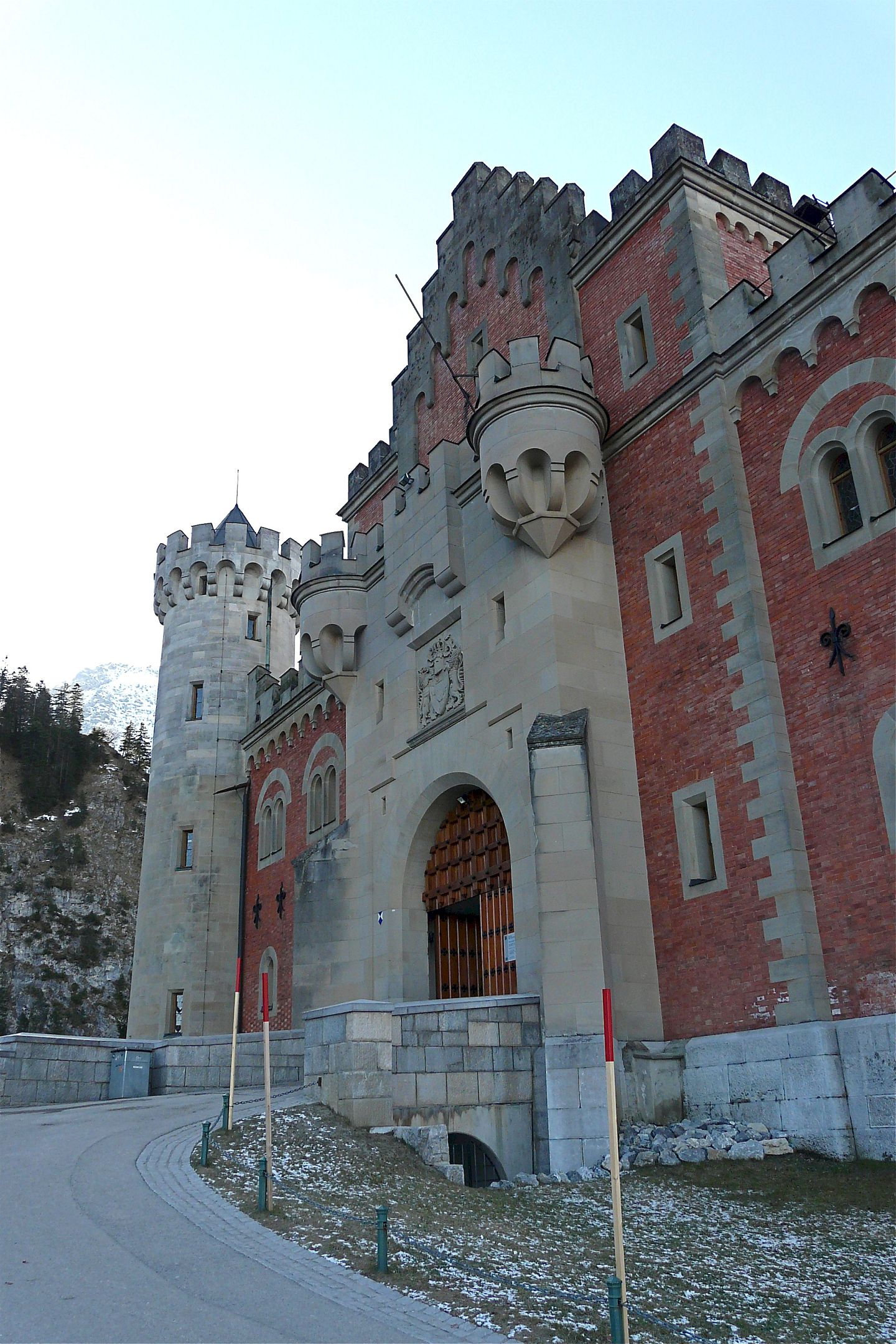 The foundation stone was laid in the first autumn month of 1869. However, it immediately became clear that the planned 3-year period for construction would have to be postponed: the grandiose building could not be erected so quickly. The vastness of the project and the site on the mountain created incredible difficulties. Ludwig, who moved in immediately after the construction of the gates and the first gatehouses, had to live for many years in the beautiful fort that was still being built. The complexity also appeared due to the fact that the monarch, who retired from the outside world, constantly made changes to the project. The king ordered to turn the guest rooms into a “Moorish Hall” with a fountain (this idea was never implemented). The "Letter Room" in 1880, as a result, acquired the size of a small grotto. The uncomplicated "Reception Hall" in the final version appeared before the monarch in the Throne Room. The palace was increasingly losing its purpose - to be a place for receptions and guests, and more and more became like a monument to royal majesty and the likeness of the famous castle of Montsalvat with the Grail.
The foundation stone was laid in the first autumn month of 1869. However, it immediately became clear that the planned 3-year period for construction would have to be postponed: the grandiose building could not be erected so quickly. The vastness of the project and the site on the mountain created incredible difficulties. Ludwig, who moved in immediately after the construction of the gates and the first gatehouses, had to live for many years in the beautiful fort that was still being built. The complexity also appeared due to the fact that the monarch, who retired from the outside world, constantly made changes to the project. The king ordered to turn the guest rooms into a “Moorish Hall” with a fountain (this idea was never implemented). The "Letter Room" in 1880, as a result, acquired the size of a small grotto. The uncomplicated "Reception Hall" in the final version appeared before the monarch in the Throne Room. The palace was increasingly losing its purpose - to be a place for receptions and guests, and more and more became like a monument to royal majesty and the likeness of the famous castle of Montsalvat with the Grail.
Since 1875, the crowned man has been practically leading a night life: he goes for walks in the mountains at night, sitting in a carriage or sleigh, which were created using new technologies. Often the monarch changed clothes for such exercise in historical clothes. The reincarnation was also supported by private performances in the family castle. The only spectator of opera and theatrical performances was the crowned bearer.
Innovator King
 According to the idea of the hermit-monarch, Neuschwanstein Castle was to become an example of a medieval castle building, but comfortable for living through the use of new technologies. Palace rooms were heated by the use of hot air central heating. Running water was available on every floor, both hot and cold water was supplied to the cooker, and the toilets were equipped with automatic flushing. The king called the servants and adjutants with an electric bell. And on the third and fourth floors there were telephone sets. Food was served from the kitchen to the refectory on a lift. New machinery was used in the construction, such as cranes powered by steam engines. The architects who designed Neuschwanstein also did their best: such large windows were very rare during the reign of the sovereign of Bavaria.
According to the idea of the hermit-monarch, Neuschwanstein Castle was to become an example of a medieval castle building, but comfortable for living through the use of new technologies. Palace rooms were heated by the use of hot air central heating. Running water was available on every floor, both hot and cold water was supplied to the cooker, and the toilets were equipped with automatic flushing. The king called the servants and adjutants with an electric bell. And on the third and fourth floors there were telephone sets. Food was served from the kitchen to the refectory on a lift. New machinery was used in the construction, such as cranes powered by steam engines. The architects who designed Neuschwanstein also did their best: such large windows were very rare during the reign of the sovereign of Bavaria.
Death of Ludwig II of Bavaria
The king did everything to make his family and society consider him strange: he stopped doing state affairs, did not want to marry in order to leave descendants behind him, was known as a biryuk. At first, everything was attributed to the youth and inexperience of the monarch. However, over the years, the symptoms of mental illness were visible to the naked eye. As a result, in June 1886, psychiatrists officially recognized the king as insane. And 3 days later, Ludwig and his personal doctor went for a walk and did not return. Soon they were found lifeless in the Starnbergsee lake. What happened has not yet been established. In the place where they found the unfortunate king, a cross was erected. However, there is no doubt that the castles he built, and especially Neuschwanstein, became a real monument in memory of Ludwig II of Bavaria.
The construction of the Neuschwanstein Castle required a huge amount of money for that time - 6 million gold marks. Therefore, in order to partly cover the costs, those who wished were allowed in here, as soon as they learned about the death of the autocrat.
Neuschwanstein Castle Interiors: Design and Decor
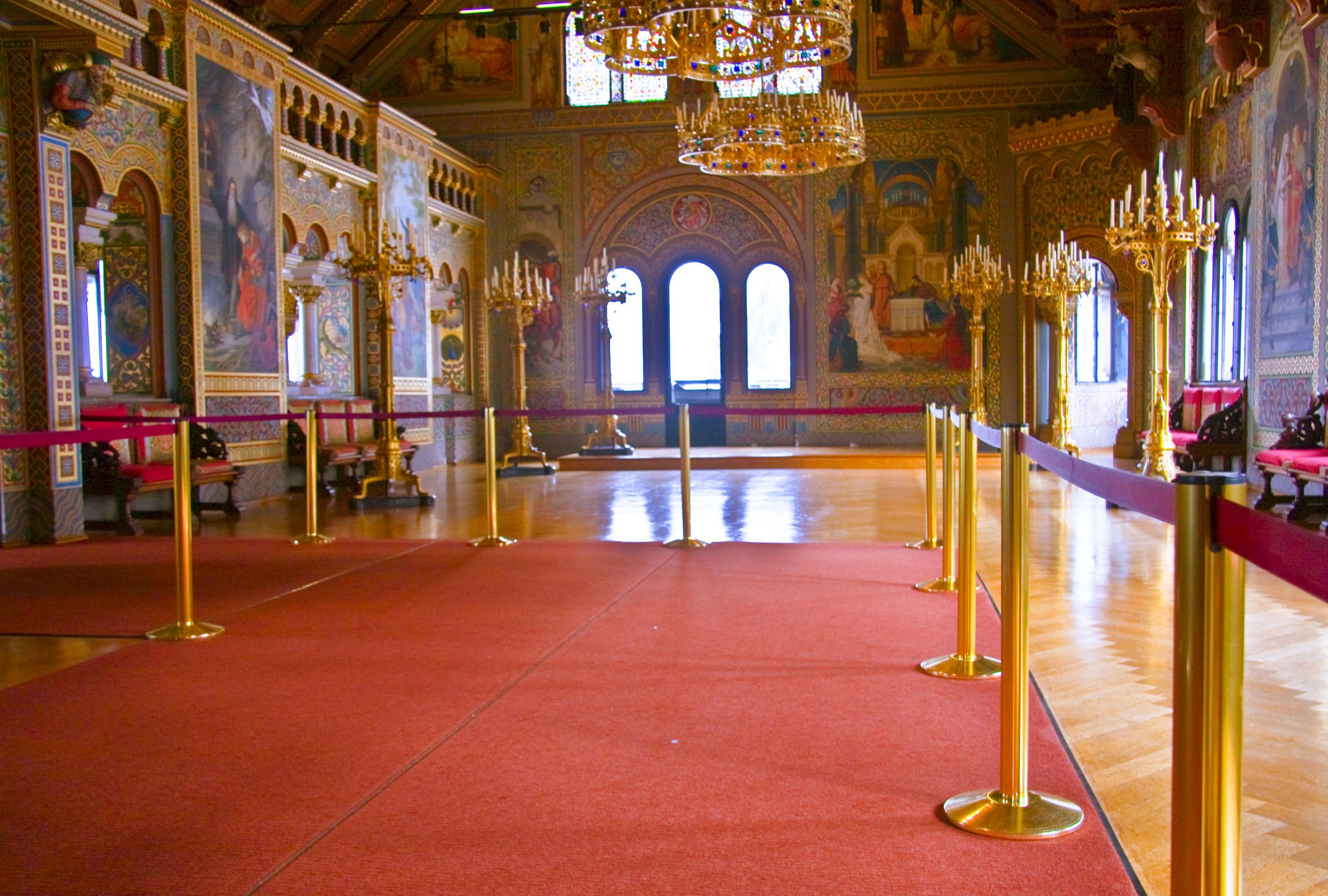 The throne room is the idea of Eduard Ille and Julius Hoffmann. The blue-glowing ceiling dome of the room has become the place where Christ sits, surrounded by Mary and Johannes, as well as the canonized holy kings: Casimir and Stefan, Henry and Ferdinand, Edward and St. Louis. At the forefront is a precious candlestick for 96 candles, made of copper with gilding in the form of a Byzantine crown. The weight of the candelabra reaches 18 centners. The mosaic floor, created by the Viennese master Dermont, looks like a pastiche of flora and fauna. The throne room is crowned with a semicircle of gilded apse. The steps (there are 9 of them) made of white Carrara marble are framed with images of the 12 apostles and lead to the podium. There was supposed to be a golden throne with the inclusion of ivory elements. But, unfortunately, it remained so only in the project.
The throne room is the idea of Eduard Ille and Julius Hoffmann. The blue-glowing ceiling dome of the room has become the place where Christ sits, surrounded by Mary and Johannes, as well as the canonized holy kings: Casimir and Stefan, Henry and Ferdinand, Edward and St. Louis. At the forefront is a precious candlestick for 96 candles, made of copper with gilding in the form of a Byzantine crown. The weight of the candelabra reaches 18 centners. The mosaic floor, created by the Viennese master Dermont, looks like a pastiche of flora and fauna. The throne room is crowned with a semicircle of gilded apse. The steps (there are 9 of them) made of white Carrara marble are framed with images of the 12 apostles and lead to the podium. There was supposed to be a golden throne with the inclusion of ivory elements. But, unfortunately, it remained so only in the project.
The Song Hall is the central building in Neuschwanstein Castle. The most significant in size, with a high ceiling and luxurious decoration, the hall impresses with countless elements in the murals. The plots of the frescoes with the participation of Parsifal tell of a young man who went from a naive idea of knights to their idealization. Parsifal also had to learn about love leading to communion from the Holy Grail. The apogee of the legend is the moment when the young man comes to the Holy Grail. The scene of the meeting of Parsifal with the sacred Chalice became the main one on the largest canvas of the Hall of Singers.
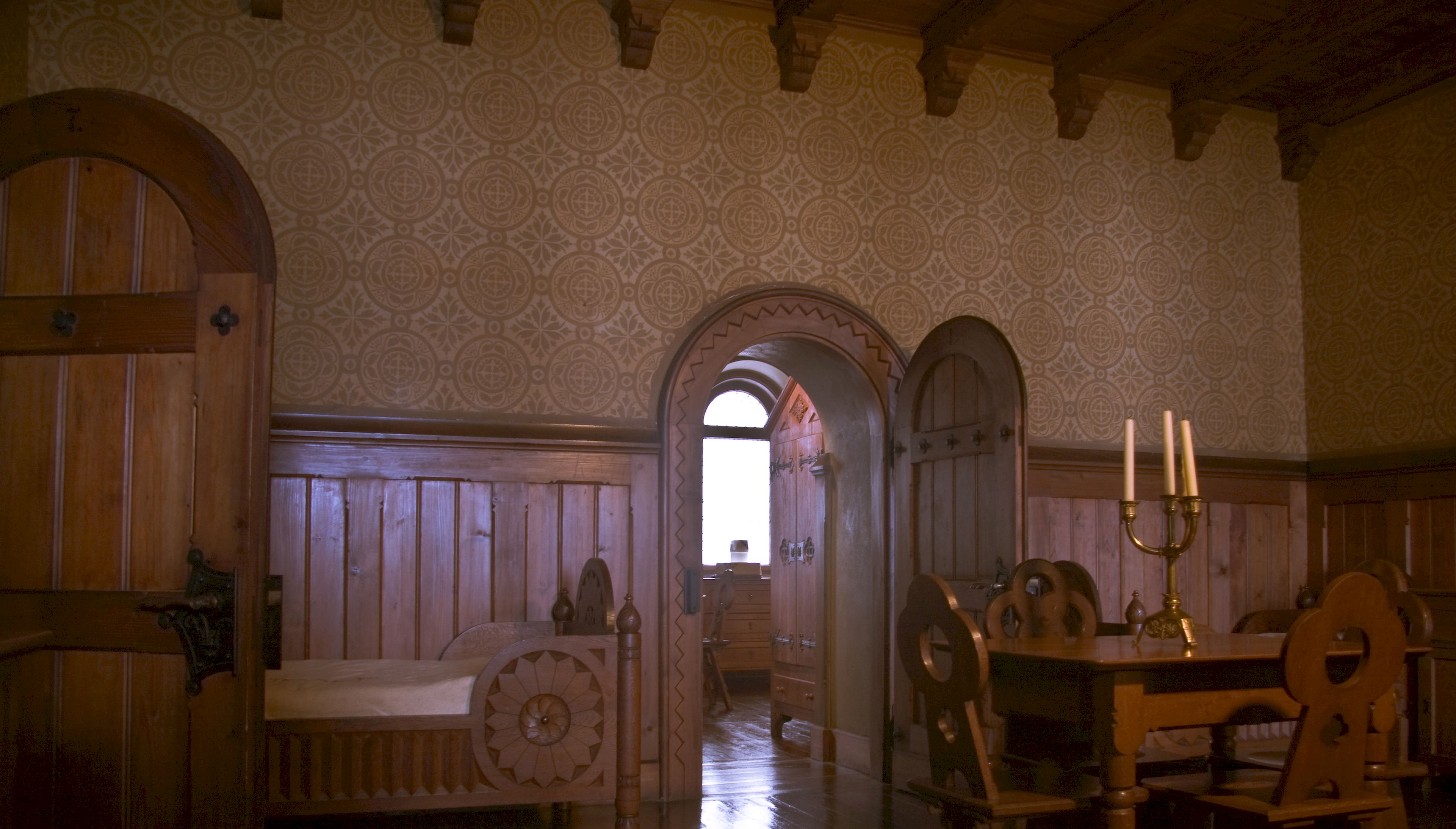 The master's bedroom in neo-Gothic design fascinates with carved decor and high relief. 4.5 years 14 carving masters carved jewelry. The paintings mainly depict episodes from the life of Tristan and Isolde: the heroes of the German epic touched the deep strings of the soul of the 20-year-old anointed of God. Through the window opening of the bedroom balcony you can see the amazing Pellata Canyon, into which a waterfall rushes its stream from a 45-meter height.
The master's bedroom in neo-Gothic design fascinates with carved decor and high relief. 4.5 years 14 carving masters carved jewelry. The paintings mainly depict episodes from the life of Tristan and Isolde: the heroes of the German epic touched the deep strings of the soul of the 20-year-old anointed of God. Through the window opening of the bedroom balcony you can see the amazing Pellata Canyon, into which a waterfall rushes its stream from a 45-meter height.
The bedroom communicates with a small prayer room of the autocrat. She appeared in memory of St. Louis, King Louis of France: Ludwig honored this sovereign. In the painted lancet vault there is an incised folding altar, decorated with exquisite carvings.
The organizers of Disneyland Paris, seeing the castle, decided to take advantage of its fabulous exterior. And they embodied this in an amusement park by building the Sleeping Beauty Palace.
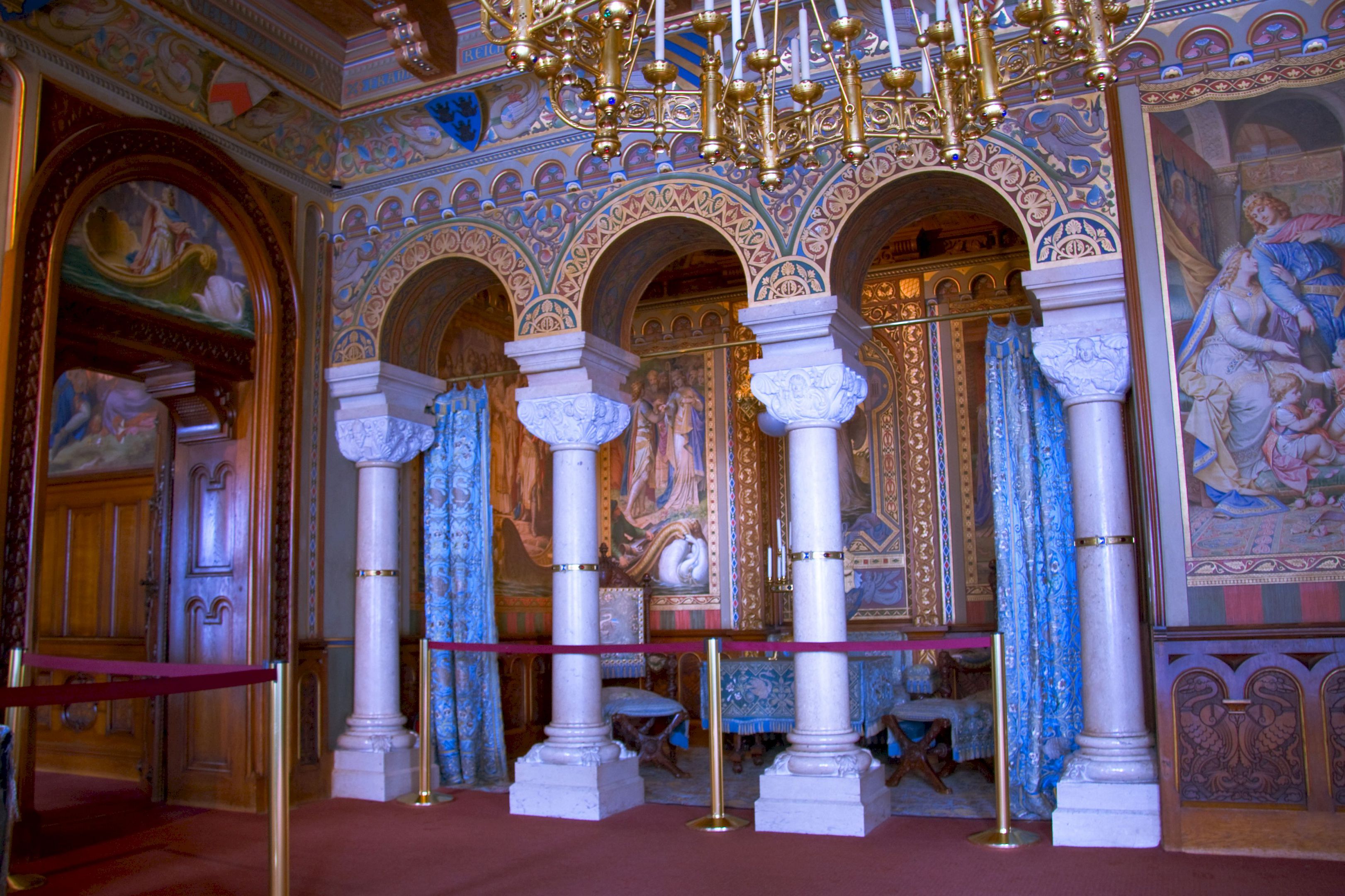 The royally decorated living room greets visitors with a bay window located in front at the so-called "swan" angle. The main theme for the design was the image of the swan knight Lohengrin (Ludwig II was unusually devoted to him). In the creation of large panels, the handwriting of the painters Gauschild and von Haeckel can be traced. The paintings reproduce the plots of the legend of Lohengrin. These are the Miracle of the Grail and the Arrival of Lohengrin in Antwerp. The swan theme can be seen in the patterned decor of the wooden panels, and in the gold embroidery of the curtains and silk drapery.
The royally decorated living room greets visitors with a bay window located in front at the so-called "swan" angle. The main theme for the design was the image of the swan knight Lohengrin (Ludwig II was unusually devoted to him). In the creation of large panels, the handwriting of the painters Gauschild and von Haeckel can be traced. The paintings reproduce the plots of the legend of Lohengrin. These are the Miracle of the Grail and the Arrival of Lohengrin in Antwerp. The swan theme can be seen in the patterned decor of the wooden panels, and in the gold embroidery of the curtains and silk drapery.
The kitchen (dining room) of the castle is lined with oak paneling, which houses the paintings of Ferdinand Riloti and Joseph Aigner.
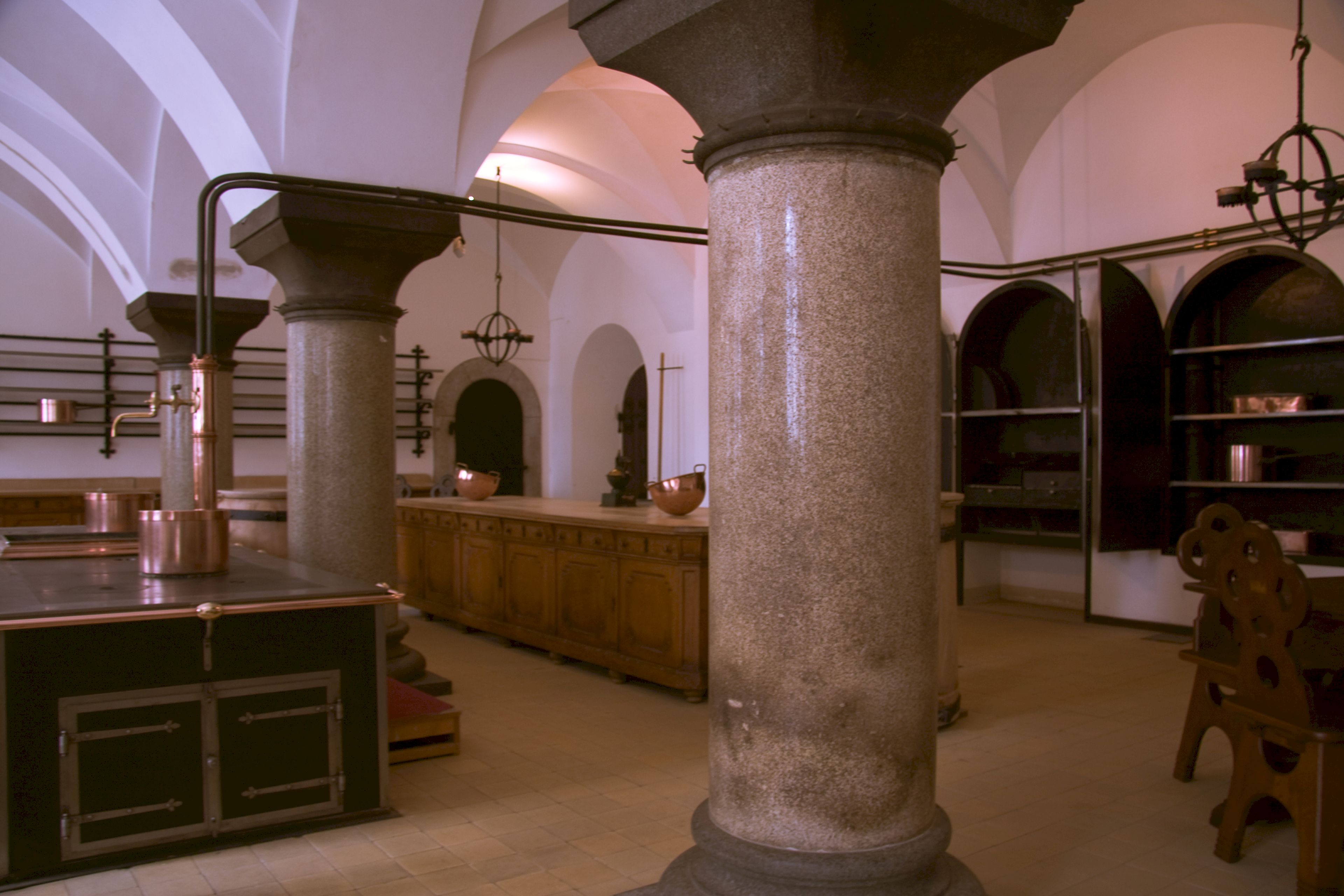 In the study, the eye is attracted by the tabletop in thick green silk with gold embroidery. Curtains are sewn from the same material. They were made by women of the villages of Bavaria for more than one year. Sketches of embroidery were made by famous artists and the most crowned person. The office and the home chapel were separated by a partition in the form of screens decorated with embroidery. The crowned Bavaria, as a zealous Catholic, devoted many hours to prayers, strictly adhered to fasts, and often meditated.
In the study, the eye is attracted by the tabletop in thick green silk with gold embroidery. Curtains are sewn from the same material. They were made by women of the villages of Bavaria for more than one year. Sketches of embroidery were made by famous artists and the most crowned person. The office and the home chapel were separated by a partition in the form of screens decorated with embroidery. The crowned Bavaria, as a zealous Catholic, devoted many hours to prayers, strictly adhered to fasts, and often meditated.
Writing accessories - to match everything in the office: their sophistication is achieved by using gold, ivory and natural stones. And everywhere there are swan images.
Rumors around the castle.
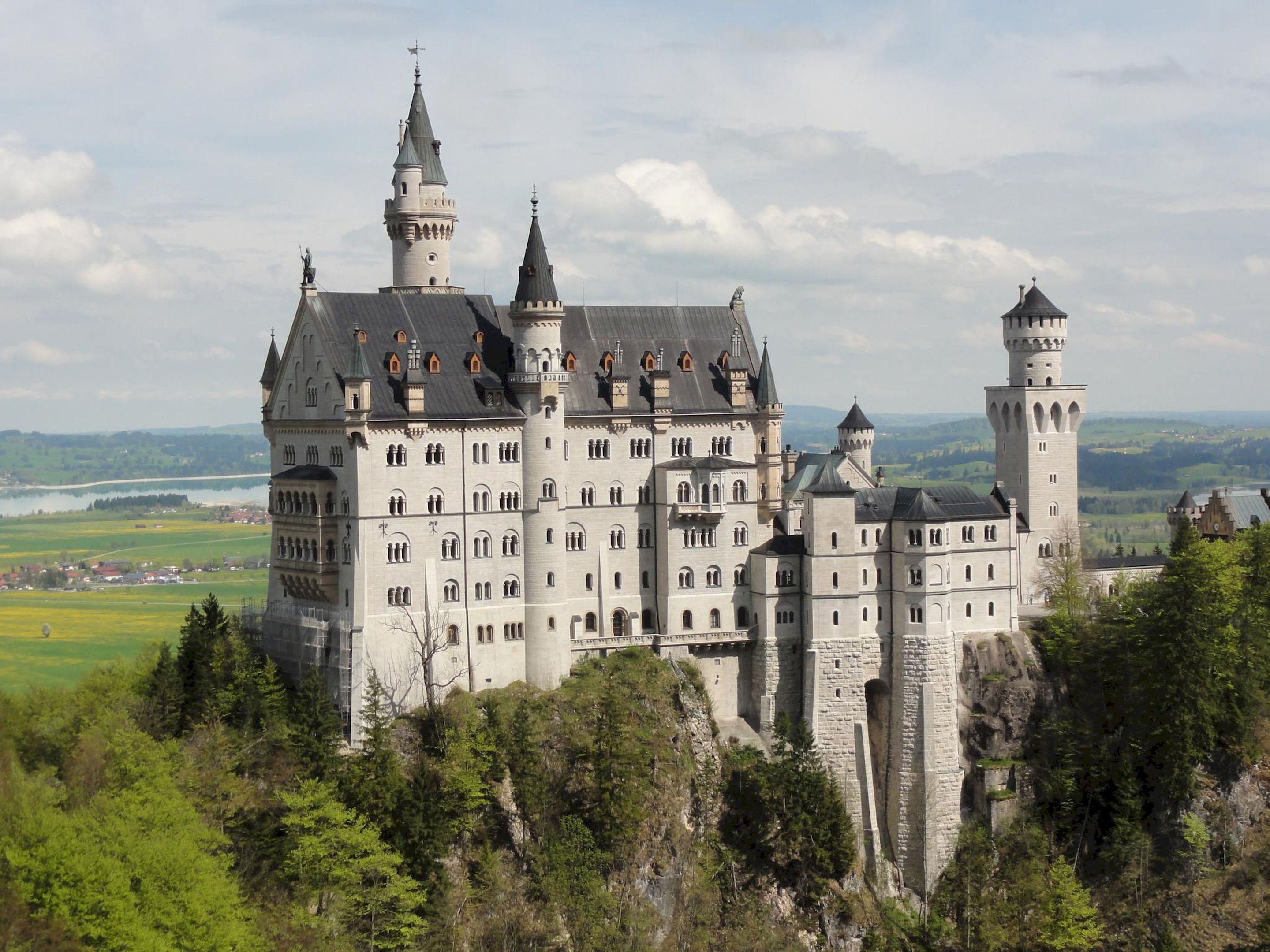 Rumor claims that during the days of Nazi Germany, one of the "ideological" garrisons of the 3rd Reich was quartered in the chambers. Soldiers were instructed to study the occult, the Nibelungs, the runes and the foundations of the Germanic spirit. However, even the Nazis, who are ruthless towards people of non-traditional sexual orientation, agreed with the statement that the romantic worldview of the king prevails over all his vices.
Rumor claims that during the days of Nazi Germany, one of the "ideological" garrisons of the 3rd Reich was quartered in the chambers. Soldiers were instructed to study the occult, the Nibelungs, the runes and the foundations of the Germanic spirit. However, even the Nazis, who are ruthless towards people of non-traditional sexual orientation, agreed with the statement that the romantic worldview of the king prevails over all his vices.
Another rumor concerns World War II. It is believed that during this period, part of the gold of the Reichsbank was preserved in the Neuschwanstein castle, which was taken away to no one knows where in the final war days. He may have been drowned in the nearby Alat Lake. The palace also kept stolen jewelry, paintings and furniture collections - they were to be transferred to Hitler for personal use.
How to get to Neuschwanstein Castle
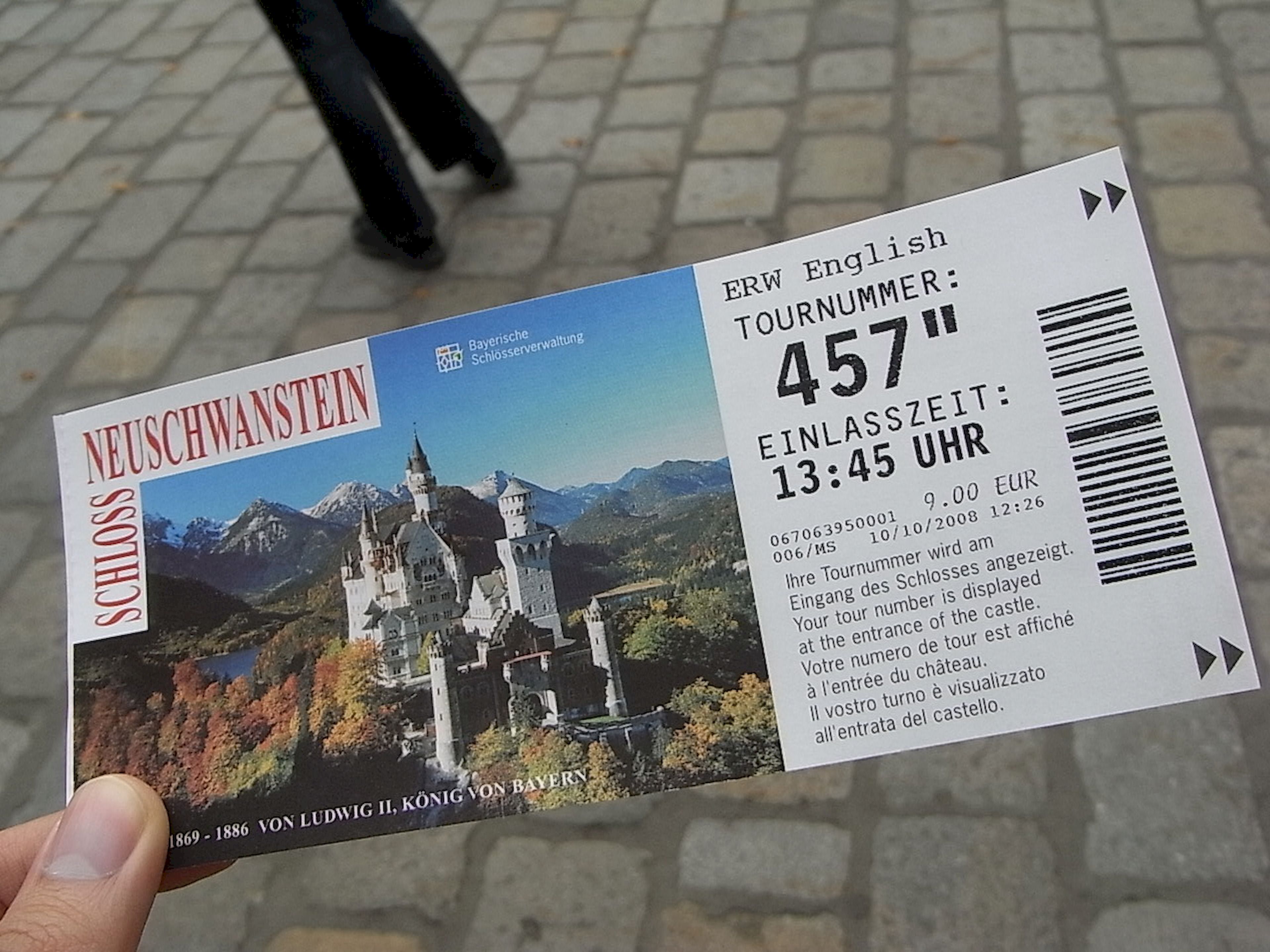 Get here by train from Munich. Having bought a ticket to Fussen in the machine, they get into the car and go to the Bukhloe station, where they transfer to the train, which takes them to the final stop. The journey will take approximately 2 hours. Then they change to a bus (taxi) and after 8 minutes. arrive in the village of Hohenschwangau with the castle of the same name. His office sells tickets to both castles. You can climb to Neuschwanstein Castle on foot in 40 minutes, by bus or by carriage.
Get here by train from Munich. Having bought a ticket to Fussen in the machine, they get into the car and go to the Bukhloe station, where they transfer to the train, which takes them to the final stop. The journey will take approximately 2 hours. Then they change to a bus (taxi) and after 8 minutes. arrive in the village of Hohenschwangau with the castle of the same name. His office sells tickets to both castles. You can climb to Neuschwanstein Castle on foot in 40 minutes, by bus or by carriage.
You can visit Neuschwanstein daily, with the exception of Christmas days. Opening hours: 9.00 - 18.00 in summer and 10.00 - 16.00 in winter. The ticket will cost 9 €.
You can get acquainted with the palace only as part of an excursion group. Each tour starts 5 minutes after the previous one. The guide will narrate in German and English alternately. The story begins with the automatic activation of the audio guide (the buttons light up). Tourists who have ascended to the 4th floor are met by a guide, who in the halls of the palace will turn on the audio guide on his own, therefore 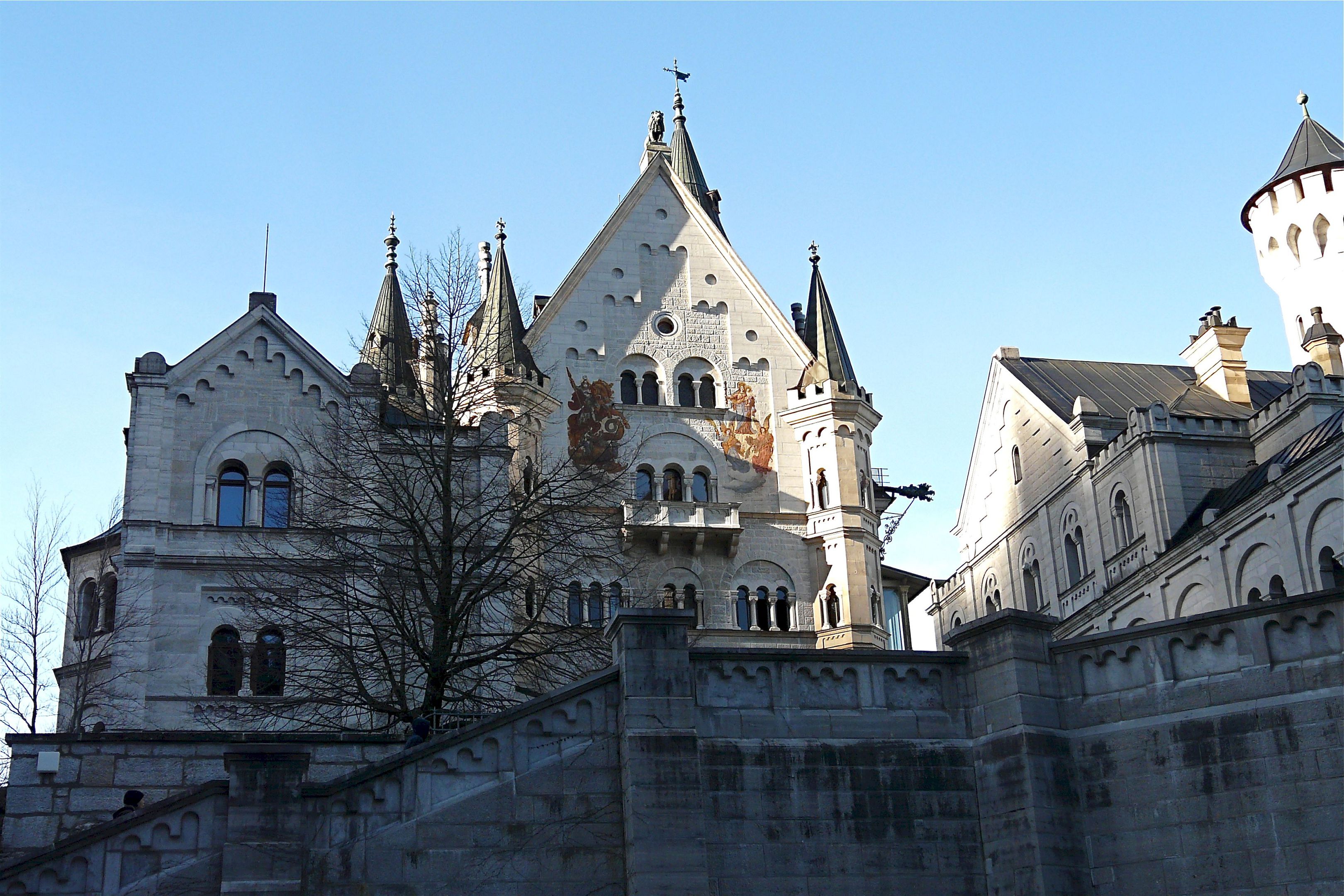 buttons will not light up.
buttons will not light up.
It is forbidden to enter the territory and inside the Neuschwanstein Castle with overall items (travel bags, strollers). Photography is also prohibited. Those who stay more than 25 minutes after the tour can listen to Wagner's music at concerts that are held here all the time.
Since 1970, Neuschwanstein Castle has hosted the Wagner Festival every September. It plays the classical music of the adored composer, adored by Ludwig II.
What to see near Neuschwanstein Castle
Near the castle, a suspension bridge stretched over a 90-meter abyss. His anointed of God named after his mother, Queen Mary, Princess of Prussia. Instead of a wooden one, in 1866 a metal viaduct was thrown over. Tourists who have climbed it have the opportunity to admire the magnificent panorama of the fairy-tale fortress.
If you find an error, highlight it and click Shift+Enter to let us know.
